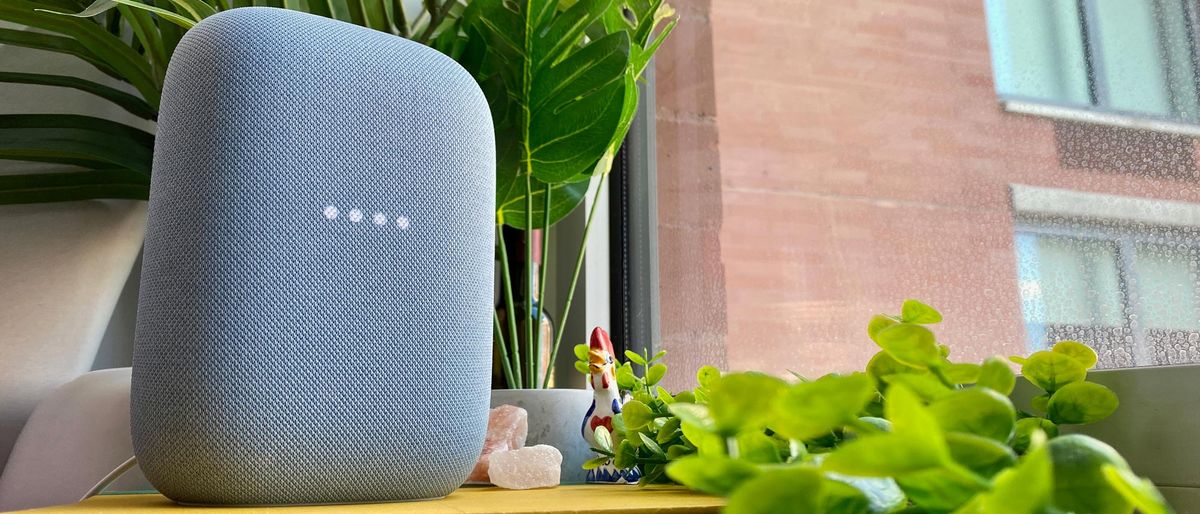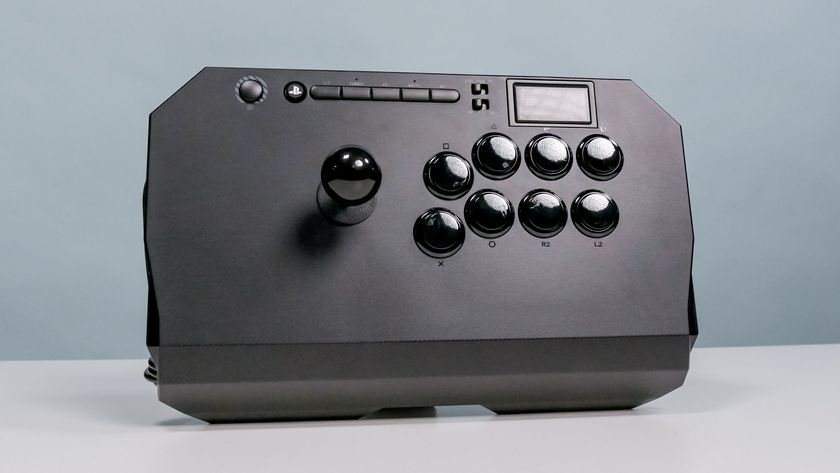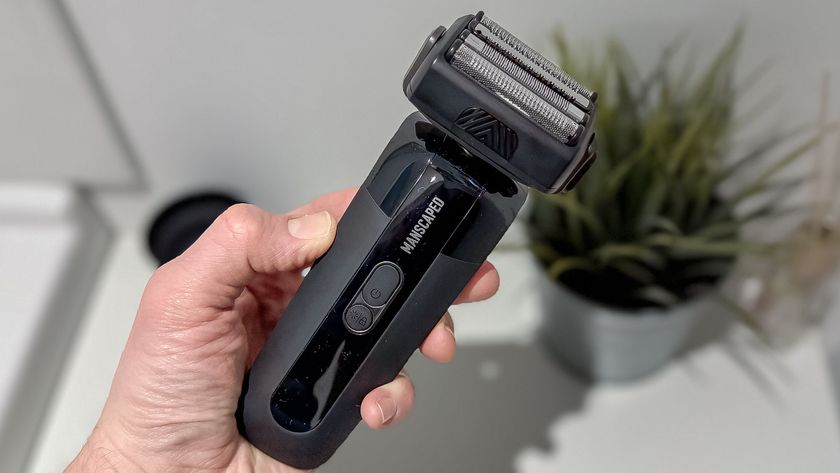Tom's Guide Verdict
The cloth-covered Google Nest Audio might not look like a premium smart speaker, but its punchy performance begs to differ. It’s the best-sounding option under $100 for Google Home and Nest customers.
Pros
- +
Eco-friendly, attractive exterior
- +
Balanced sound and soaring vocals
- +
Speedy Google Assistant responses
Cons
- -
Invisible touch controls can be fickle
- -
Can’t be used an an audio-out source
Why you can trust Tom's Guide
Price: $99
Colors: Chalk, Charcoal, Sand, Sky, Sage
Size: 6.89 x 4.89 x 3.07 inches
Weight: 2.65 pounds
Speakers: 75-mm woofer, 19-mm tweeter
Mics: 3
The Google Nest Audio is an odd replacement for the original Google Home. Unlike the company’s debut smart speaker, which was deployed as a command center for Google Assistant, Nest Audio is positioned as a great-sounding—but not too expensive—speaker and a hands-free home hub second.
At $99, the Google Nest Audio is $30 less than the original Google Home and primed to compete with the all-new, spherical Amazon Echo. With the influx of people spending more time inside, interest in raising a home's IQ is hotter than ever before, and investing in one of the best smart speakers is a good place to start.
- Google Nest Audio vs. Amazon Echo
- Check out the best Bluetooth speakers
Although it won’t eclipse the pricier Sonos One in volume or depth, this Google Nest Audio review explains how its strengthened sound performance gives you a reason to upgrade your Google Home. And how Google’s patient approach to smart speaker updates seems to be paying off.
Note also, that as part of the the Tom's Guide Awards 2021 Audio categories, the Google Nest Audio is the proud recipient of our Best smart speaker for music award. You can visit the main Tom's Guide Awards 2021 hub for the full list of awards and winners.
Google Nest Audio: Price and availability
The Google Nest Audio is available starting October 5 for $99; you can purchase it in one of five colors: Chalk, Charcoal, Sand, Sky, or Sage.
Google Nest Audio review: Design
The Google Nest Audio looks like last year’s Google Nest Mini grew in one of those produce molds that make heart-shaped watermelons.
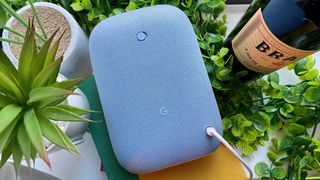
Some might say the elliptical Nest Audio looks like a 7-inch tall pill or oversized eyeglass case, but I see a smooth-edged smart home device that looks less techy than others, in a good way.

While the calming Sky blue model I reviewed doesn’t quite match in my neutral-hued living space, in the right color it would blend in well no matter where I placed it in the room. I could also see myself balancing out my entertainment center with a second Nest Audio for the opposite side of my TV stand.

Beneath its front-facing, fabric-swathed exterior, the Google Nest Audio has the expected LED status array. On the back, there’s a physical microphone toggle, but no other buttons interrupt the woven sleeve. Instead, capacitive touch controls just beneath the top seam can be used for controlling music, although it’s not exactly obvious where they are. You have to be intentional with your taps, too, otherwise you might pause your playlist instead of raising the volume. I had that issue a few times.
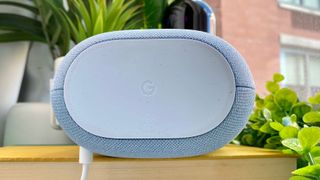
Google Nest Audio review: Sound performance
When I set up the Google Nest Audio next to the Sonos One for comparison testing, I didn’t expect the Nest’s 19-millimeter tweeter and 75mm mid-woofer to keep up with Sonos’s amplifiers, even with its Media EQ feature that adapts sound to the room. To some extent, that held up — the Nest Audio doesn’t get as loud as the Sonos One, despite being 75% louder than the original Google Home.

But in terms of audio quality, Google found a steady stride. With the help of Airplay and casting, I bounced between the Nest Audio and Sonos One for a series of my favorite songs. Although the latter’s profile sounded more complex, the Nest Audio nearly had the Sonos One beat in vocal clarity.
Alicia Keys sounded so buttery smooth in You Don’t Know My Name’s opening line that I could envision her smirking over her piano, knowing she nailed the notoriously difficult run. Although I think the Nest Audio’s profile favors vocals a smidge more than an artist might intend, it works well for a speaker trying to flood an entire room with even sound.
If you haven’t heard Miley Cyrus cover Blondie’s Heart of Glass yet, change that. Even better if you can listen through a Nest Audio, which delicately layers the synthetic bongo drums, sizzling cymbal roll and double-tracked bass before opening up for the guttural depth of Cyrus’s newer sound.
Meanwhile, the steady bass line in Kendrick’s Lamar’s Humble sounded pronounced and punchy. I don't think bass enthusiasts will find the gripping vibrations they crave with the Nest Audio, but it’s an obvious improvement from the Google Home.
On a similar note, although Marvin Gaye’s Ain’t No Mountain High Enough sounded more infectious no matter where I stood in the room in relation to my Sonos One, the Nest Audio also held its own. It doesn’t have the same capacity for all-encompassing sound as the Sonos One, but for its size and price you can consider me impressed with its balance.
If you’d like, you can pair two Google Nest Audio speakers for stereo sound, or group the Google Nest Audio with other in-brand speakers and displays for music throughout the home. You cannot, however, use Google Nest Audio as a standalone audio out source for your smart TV, even the new Google Chromecast with Google TV. For the same price, the new Amazon Echo supports this feature.
Google Nest Audio review: Smart home features
With the exception of the Google Nest Hub Max, or perhaps Pixel phones, you won’t find a better vehicle for Google Assistant than the Nest Audio. The speaker unlocks all of the best Google Home commands and best Google Assistant commands as far as your voice can reach. Although a whisper won’t be enough, it’s microphones can pick up “Hey Google” even over loud tunes.
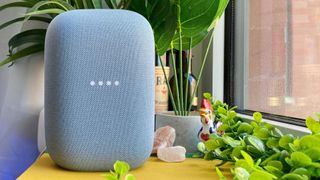
You can tell those tunes to quiet down with your voice, or ask Google to recommend songs that suit your preferences, so long as you're a YouTube Music or Spotify Premium subscriber. Of course, like with all the best Google Home speakers, you can ask Google for reminders, to control any of the best Google Home compatible devices you have paired or to make a phone call.
All of your communication with the Google Nest Audio’s is processed on-device through the speaker’s TeraOPS chip, meaning your assistant can better learn your needs while alleviating the common privacy concerns that come with voice recordings. That said, you can review and manage your interactions at any time in your Google account. Our guide on how to delete recordings from Google Home can help with that.
Either way, the TeraOPS chip also allows for speedier Google Assistant responses. On other Google smart speakers, I’ve found the virtual butler may take several seconds to search for, say, a song request, but not with the Google Nest Audio. Responses came noticeably faster, and that’s being said by a person who sometimes spends half their day speaking to voice assistants.
What wasn’t as noticeable was the Ambient IQ feature, which is supposed to raise Google Assistant's voice volume when the speaker pics up on an additional noise source. I couldn’t trigger a change by raising the TV volume or using an electric toothbrush — only when I banged two pans together (sorry, neighbors) in the middle of Google telling me the weather, I suppose the assistant got louder. But I don’t create such a cacophony often.
Google Nest Audio verdict
Google Nest Audio won’t persuade an Alexa user to switch sides, but it’s exactly what a Google Home owner could be looking for four years later — noticeably stronger sound, faster Google Assistant responses and less plastic-looking exterior.
Amazon, on the other hand, is establishing a biannual update process for its $99 Echo. Should smart speakers need to be replaced this often? Not in my opinion. The Google Nest Audio is a smart speaker that will sound good for years to come.
Kate Kozuch is the managing editor of social and video at Tom’s Guide. She writes about smartwatches, TVs, audio devices, and some cooking appliances, too. Kate appears on Fox News to talk tech trends and runs the Tom's Guide TikTok account, which you should be following if you don't already. When she’s not filming tech videos, you can find her taking up a new sport, mastering the NYT Crossword or channeling her inner celebrity chef.
